On Rákóczi Road, which suffers as a city highway, most pedestrians are now reluctant to stay long: they stay just as long as it is absolutely necessary. But that was not always the case. Although the former Kerepesi Road (named after Rákóczi in 1906 because the funeral march walked along the route at the re-burial of the prince) has been an important transport route since the Middle Ages until the 1980s, it was not only a transit point but a destination.
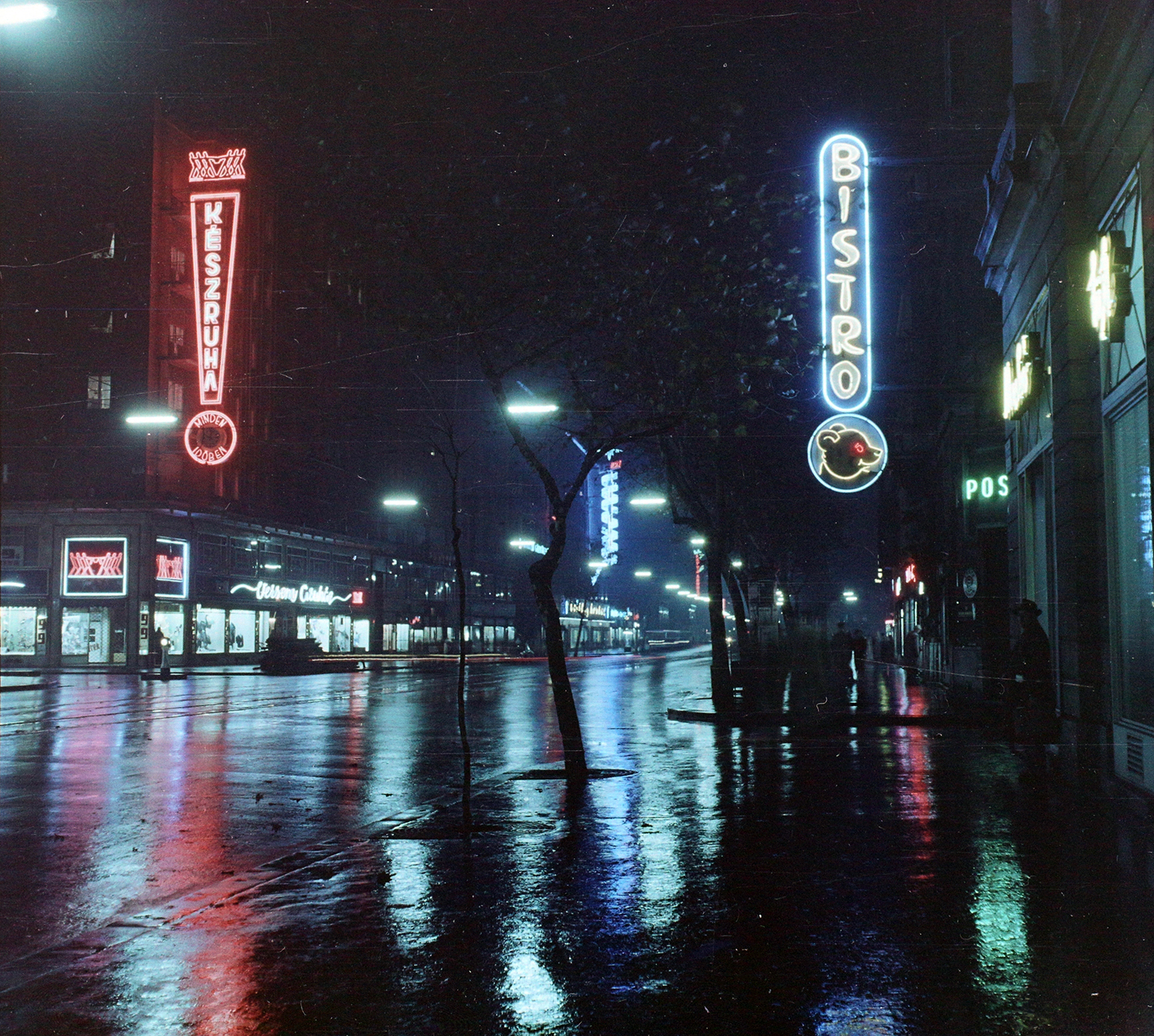
Rákóczi Road from the direction of Astoria towards the Keleti (Eastern) Railway Station in 1959 (Fortepan/Budapest Archives, No.: HU.BFL.XV.19.c.10/Fig.: 104187)
On the corner of the Astoria stood the first National Theatre, which opened in 1837 and closed in 1908, beyond that the Urania cinema, dozens of cafés, and shops. No wonder the neon-era that began in the 1950s blossomed here, on Budapest's former main shopping street. That is why most of the remaining retro advertisements can be found here in one place.
In the evenings of the 1960s and 1970s, many lights of neon signs covered Rákóczi Road, but only half a dozen of them remain. Most of the billboards can be found at the end of the road, at the top of the house under 3 Baross Square: high above, the blue logo of the Esti Hírek ('Evening News') and the sign “Vetőmag” ('Seeds') flourish in the company of a newer, but still decades-old Canon logo.
.jpg)
Neon signs that have burned out still abound today on the top of 3 Baross Square (Photo: Balázs Both/pestbuda.hu)
The tabloid newspaper Esti Hírlap, which was published between 1956 and 1996, was characterised by the fact that, unlike most dailies, it was published not in the morning but in the afternoon, so it could contain more recent news than the "competition".
The rather purposeful sign “Vetőmag” referred to the Seed Production and Sales Company (Vetőmagtermeltető és Értékesítő Vállalat), which name was typically cumbersome at the time. Its premises were located at 33-35 Rottenbiller Street, as the smaller white neon letters below the sign make it clear. And around the sign “variety selection” (fajtaválaszték) next to it, the pictures of some plants can be seen, from tulips to wheat to apples, suggesting that anyone who came into the store could choose from a wide variety of plants.
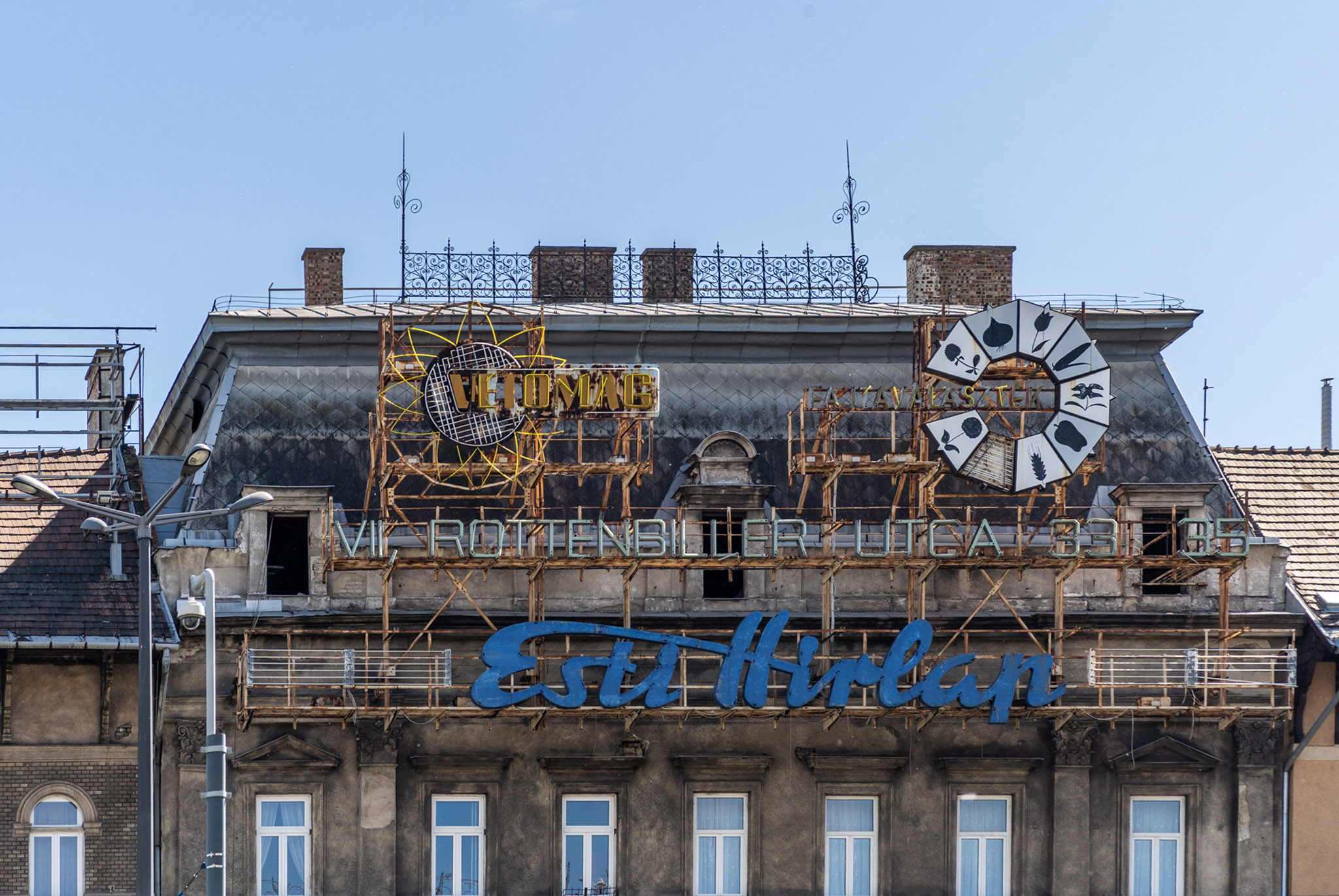
Vetőmag and Esti Hírlap have been side by side since the 1960s (Photo: Balázs Both/pestbuda.hu)
If we start from the corner of Baross Square on Rákóczi Road towards Astoria, right at the first intersection, under the red “RB” letters on the corner of house number 73, a large neon man greets us by waving his hat. He is in the company of a boy, and their weathered neon letters call us to buy ready-made clothes. Today, it is more surprising if someone is not buying ready-made, but at the time, according to newspaper ads, in the Clothing Store Company (Ruházati Bolt Vállalat), which once operated on the ground floor of the building, men could choose from a variety of outfits from athletic to casual wear, as the store specialised only in serving men.
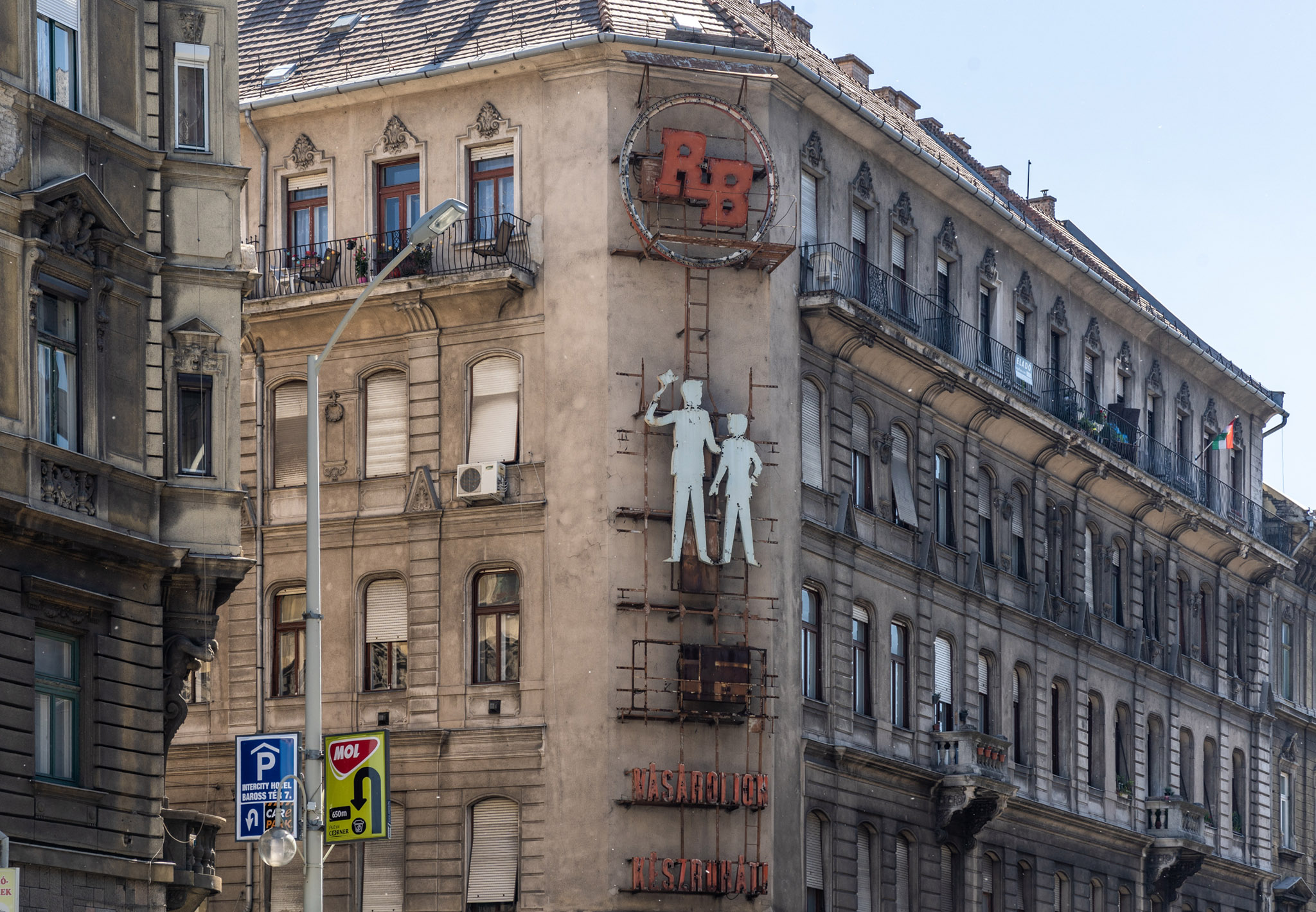
"Buy ready-made clothes!" - the neon man says on the building of the former Clothing Store Company (Photo: Balázs Both/pestbuda.hu)
Continuing on Rákóczi Road, one can notice the name of the former Otthon Department Store in large yellow letters on the walls of houses number 74-76. The store, which opened in 1961, was one of the most significant furniture stores of the socialist era. Half of Budapest was decorated with furniture purchased from there at the time. The store was not located here by accident, as its predecessor was the (Hungarian) Fashion Hall, which opened in 1921 and was only moved from here to 39 Andrássy Boulevard, the building of the former Paris Department Store, after the 1956 revolution. However, the Otthon Department Store was able to compete with later competitors (such as Domus, which opened in 1974) and finally closed in July 2002 after a long death following the regime change.
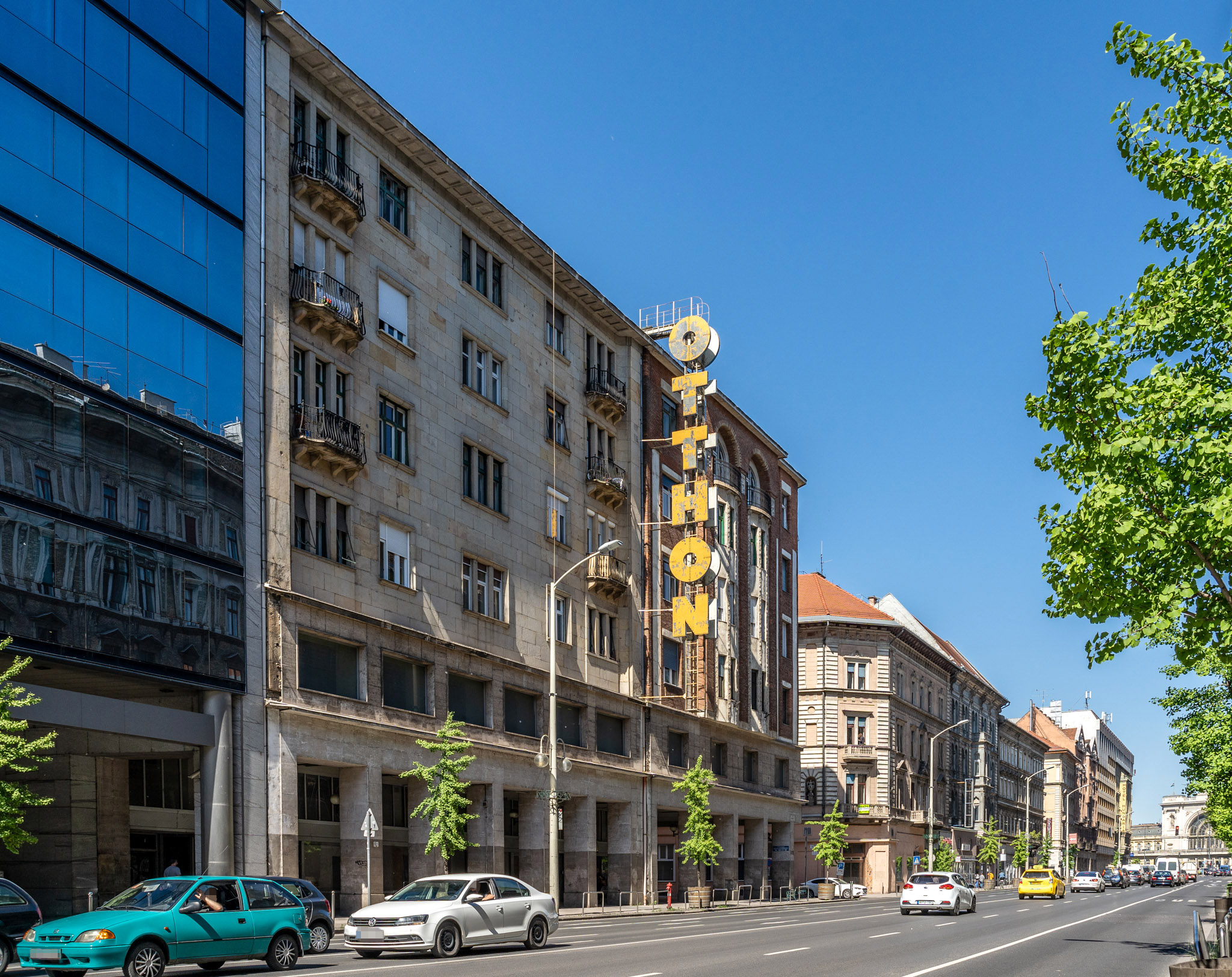
Many apartments in Budapest were furnished from the Otthon Department Store opened in 1961 (Photo: Balázs Both/pestbuda.hu)
On Rákóczi Road, some signs continue to revive their former lives: for example, on the corner of 57 Luther House, letters erected vertically in the sixties proclaimed the Erkel Theatre. Although the sign has been replaced by a modern, luminous white, it still refers to the same thing that has been incessant since then: that by turning into Luther Street, within a few minutes we can arrive at the theatre on II János Pál Pápa Square.
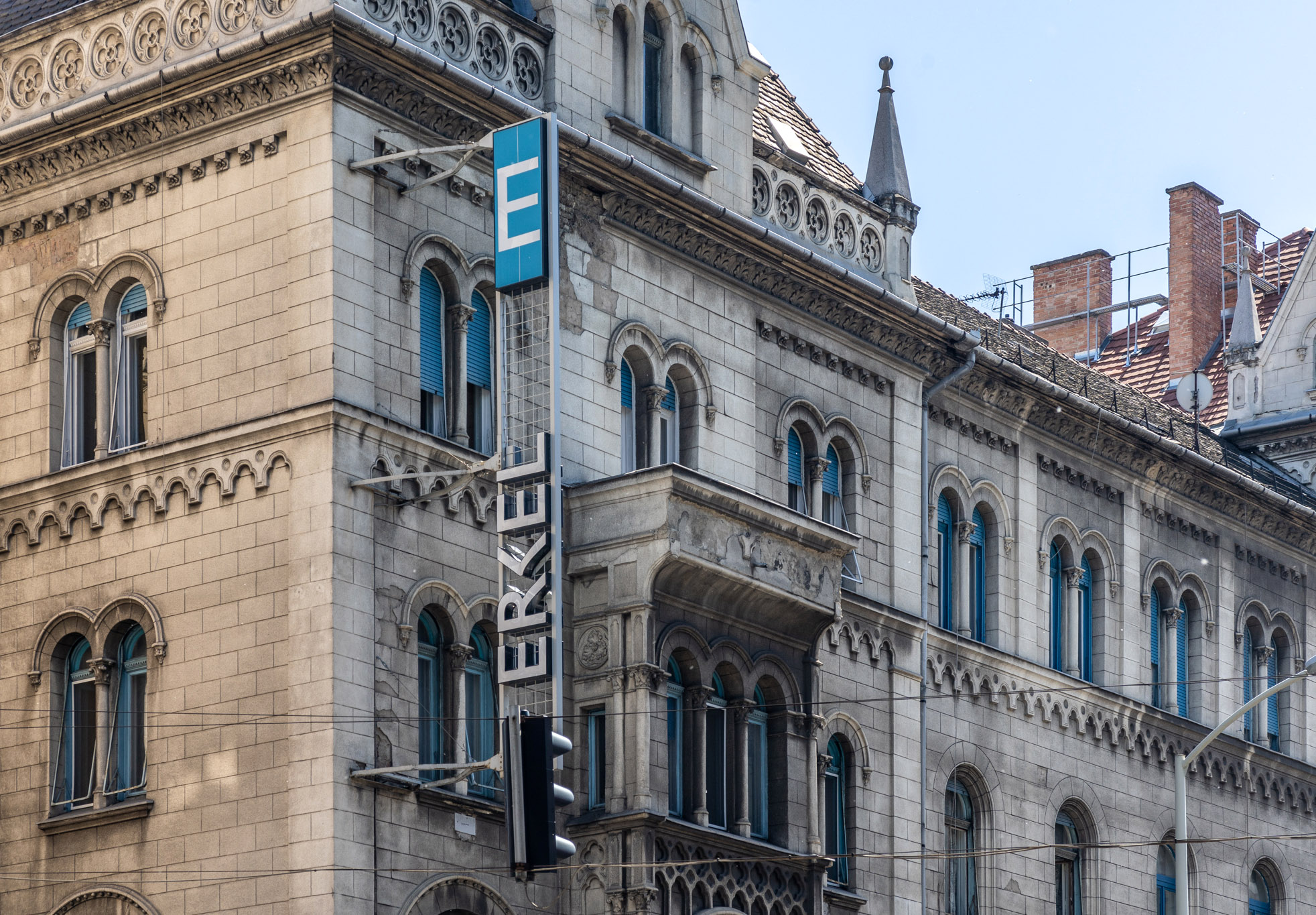
Neon-era reloaded: on the corner of the Luther House since the sixties, a sign advertises the Erkel Theatre. Neon lights then, modern fluorescent lamp today (Photo: Balázs Both/pestbuda.hu)
Walking from here, on the wall of house number 60, the sign “Triál Sport” in good condition and easy to read appears, above it the logo of the Triál. Although it is no longer a classic neon, it was once illuminated, announcing to everyone from afar that one of the largest sports, instrument, and toy companies of the socialist era, which took the name Triál in 1967, operated here. The company already sold matchboxes and Lego in the seventies, and in the eighties, they had 13 stores all over Budapest. After the change of regime, the company, which became a public limited company and was split up, ceased to exist in the 2000s, but it still has a billboard.
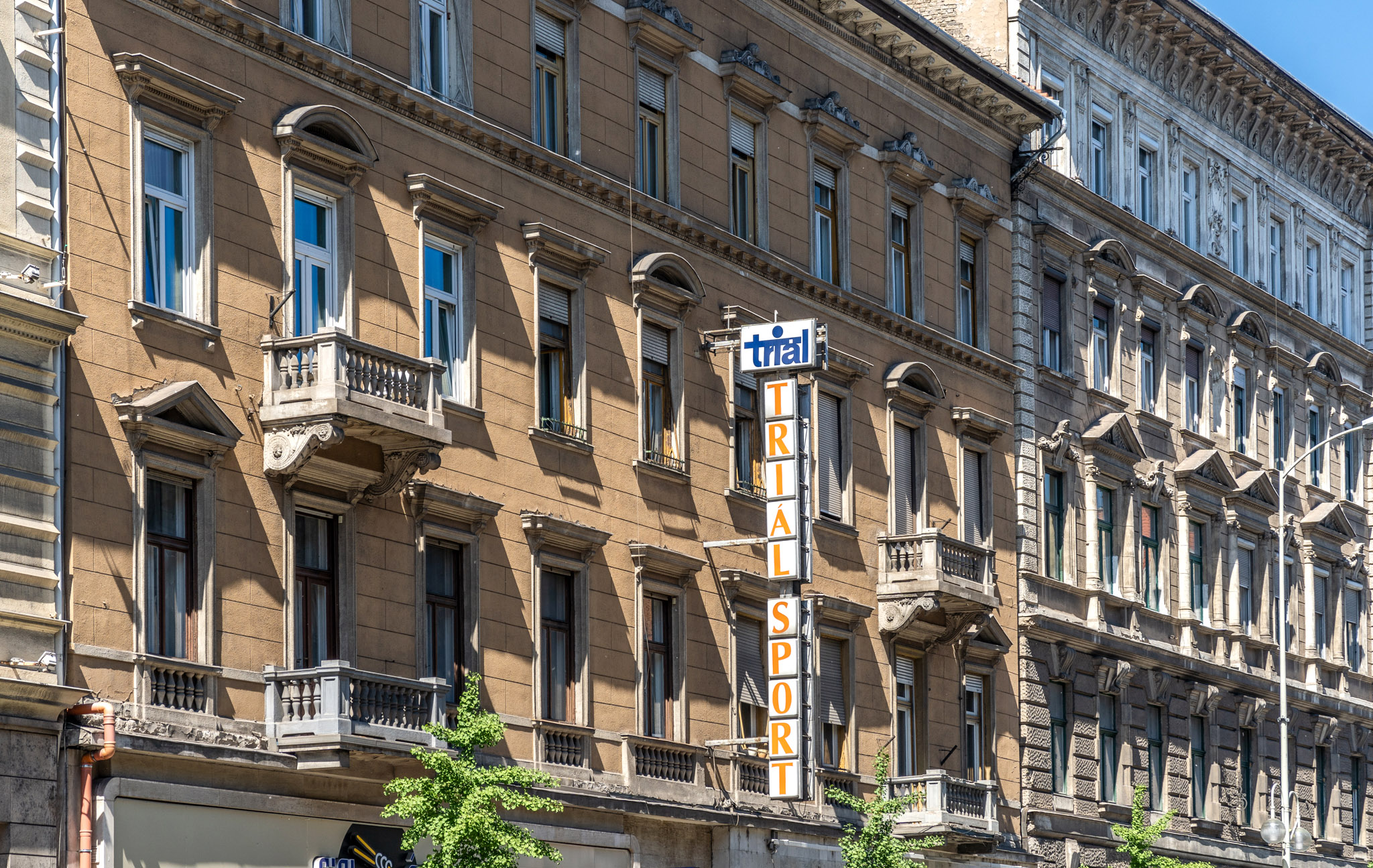
In the eighties, the Triál sports, instrument and toy company had 13 stores all over Budapest, today only the sign on the wall of 60 Rákóczi Road reminds the citizens to the store. (Photo: Balázs Both/pestbuda.hu)
The roof of the building under No. 39 on the corner of Rákóczi Road and József Boulevard was once decorated with several neon signs. On the house overlooking Blaha Lujza Square, from the sixties, the well-known oval logo of the Közért company was lit in the evenings, with the slogan imitating handwriting beneath it: “working for the public”. Although the sign was dismantled as early as the late 1970s, according to archival images, the iron cross holding the letters has remained in place, preserving the memory of one of the characteristic signs of the neon era ever since.
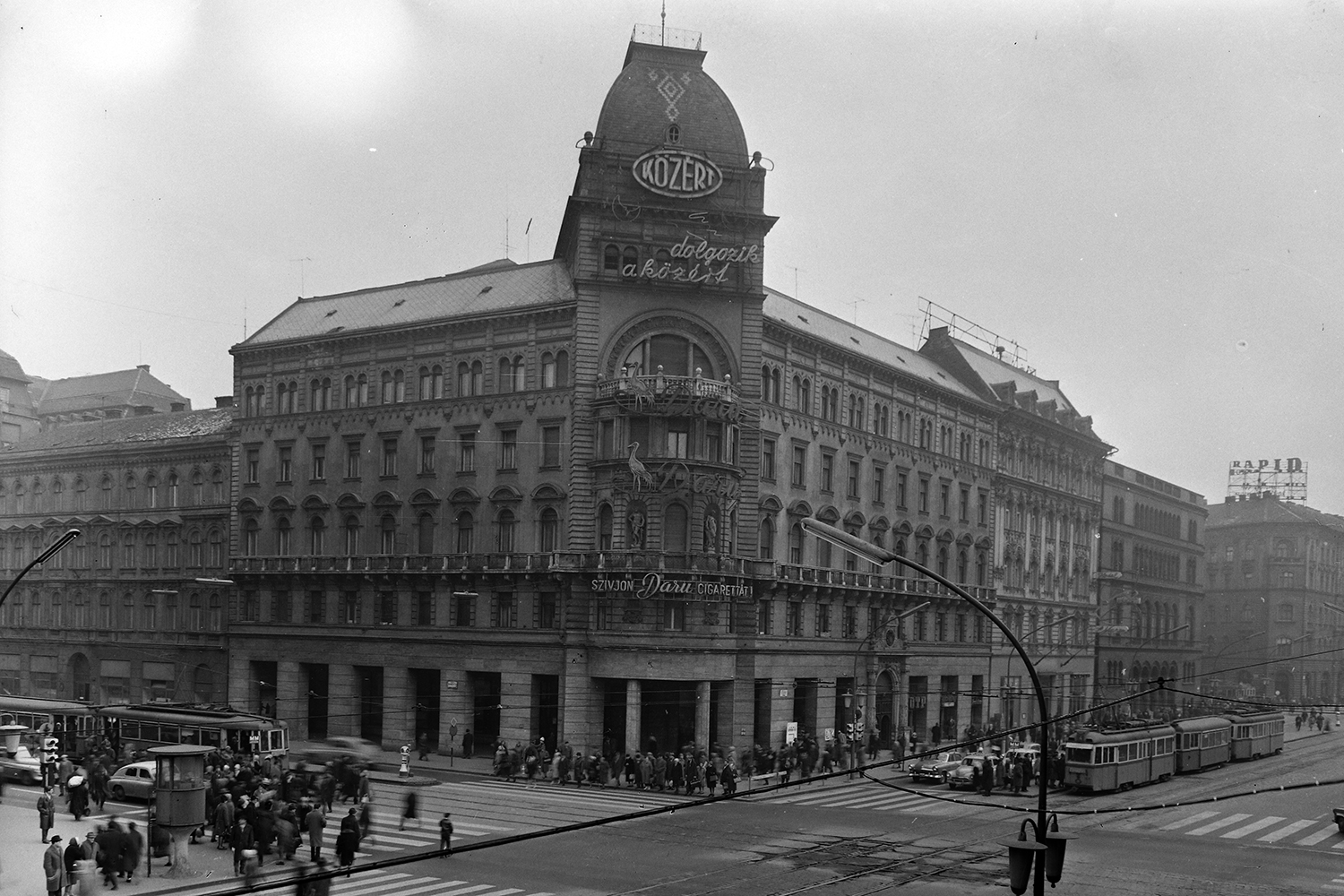 The facade of 39 Rákóczi Road, located on the corner of Blaha Lujza Square, was once decorated with several neon signs, such as the well-known Közért and the Daru cigarette logos. Photo from 1964 (Photo: Fortepan/No.: 5381)
The facade of 39 Rákóczi Road, located on the corner of Blaha Lujza Square, was once decorated with several neon signs, such as the well-known Közért and the Daru cigarette logos. Photo from 1964 (Photo: Fortepan/No.: 5381)
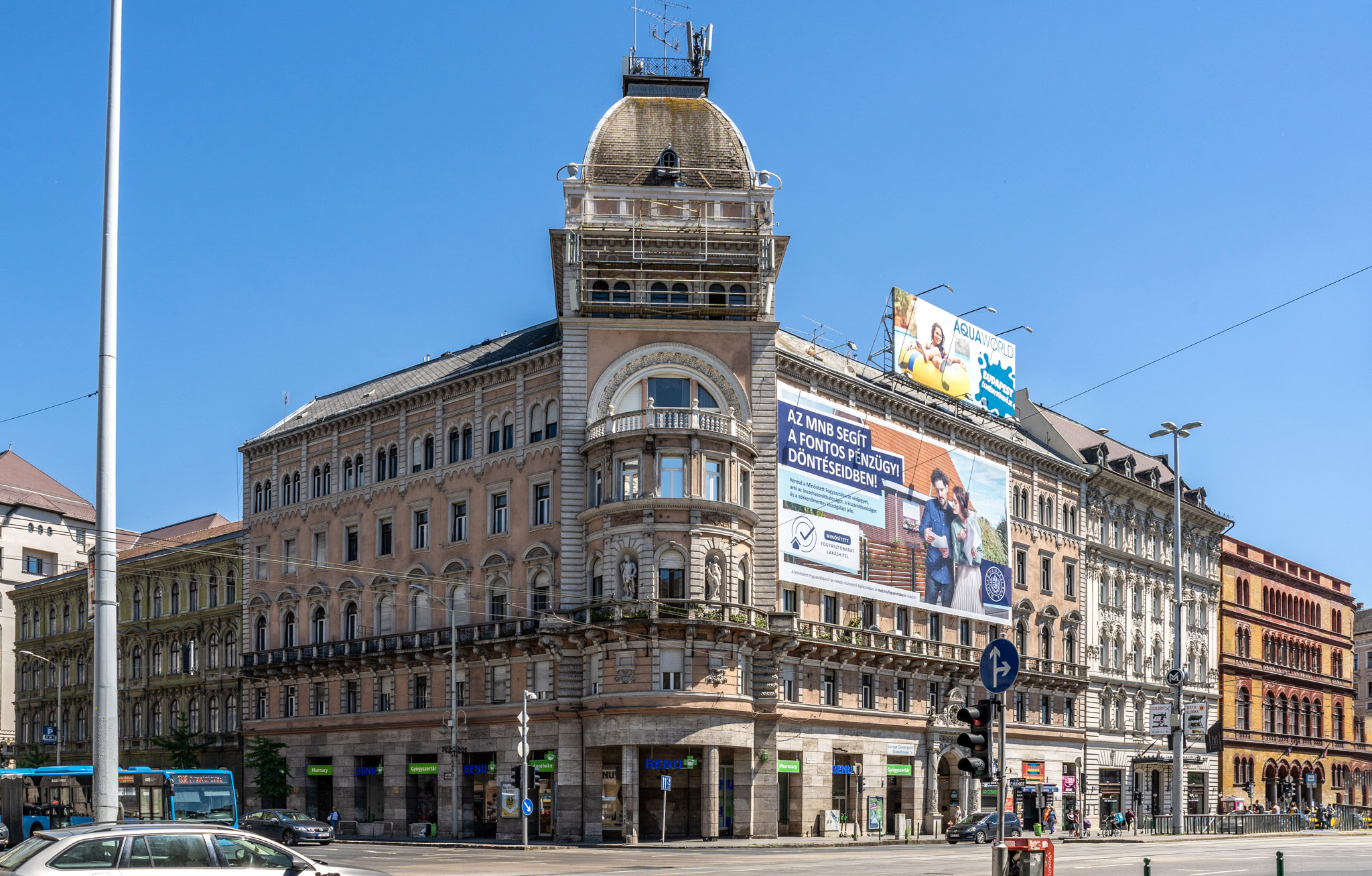
Although the neons have not existed for four decades, the supporting structure of the Közért logo has survived to this day (Photo: Balázs Both/pestbuda.hu)
Across the square, on the inner section of Rákóczi Road, on house No. 28 opposite the Rókus Chapel, a difficult-to-read but characteristic “Húsáruház” ('meat shop') sign with its hexagonal letters announces that the shop of the Downtown Közért Company has been operating here since May 1974. At the top of the board, even the company’s distinctive “b” lettering logo can be seen. In the once more than 900-square-metre store, in addition to meat products, dairy products, deep-frozen and canned goods were also sold. The company was privatised in the mid-1990s, but the business has since ceased trading.
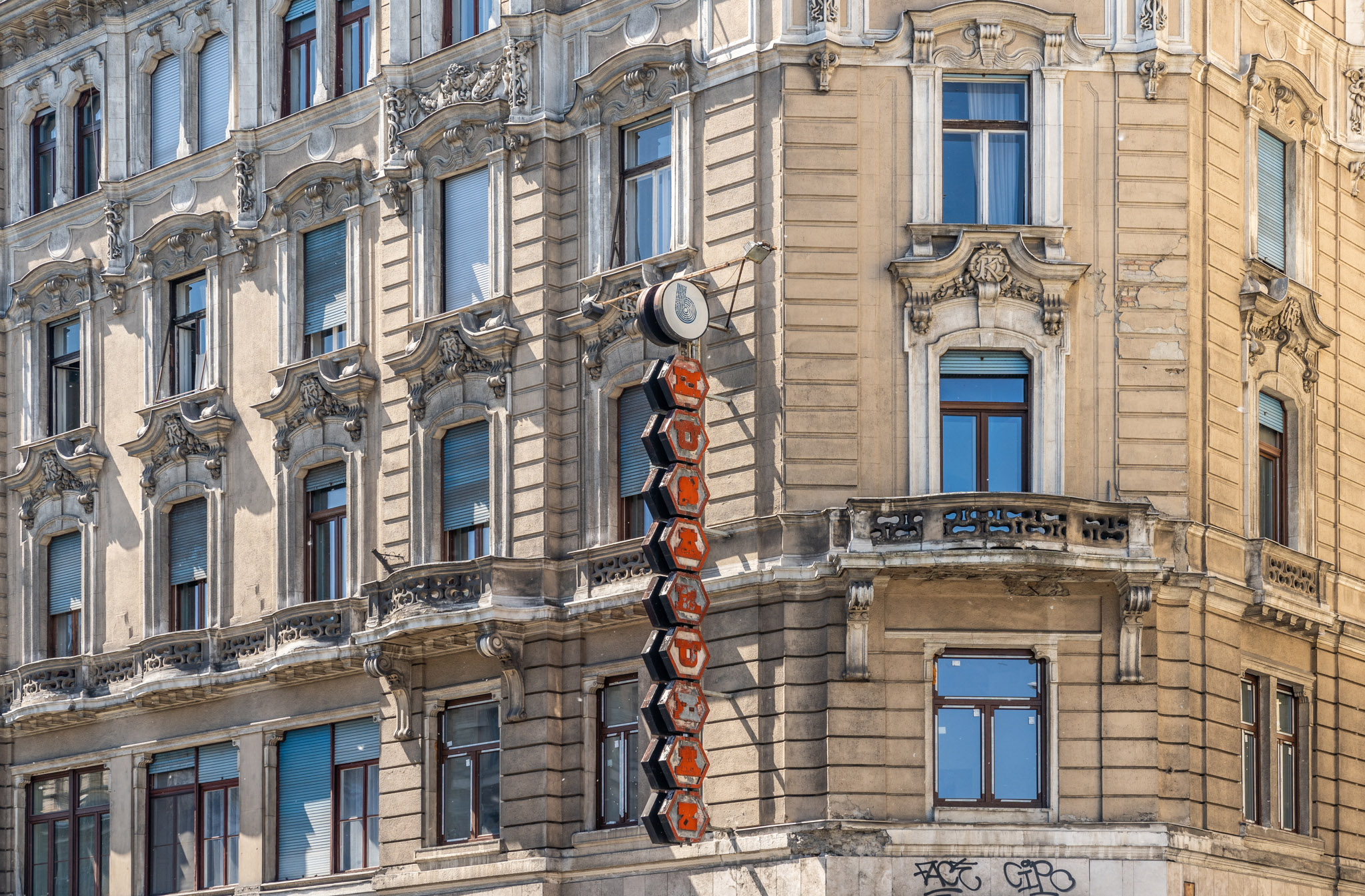
Characteristic hexagonal letters of the 900-square-metre butcher shop of the Downtown Közért Company opposite the Rókus Chapel (Photo: Balázs Both/pestbuda.hu)
If one looks from here towards Urania, one can see the remains of a real, classic neon sign on the roof of house No. 23 next to the cinema. The sign “Sztár” and the tilted glass bottle next to it leave no doubt that the remaining advertisement of the Sztár soft drink, introduced in 1969, can be seen. The beverage was originally produced in three flavours (cola, lemon, and orange) by the National Distillery Company (Szeszipari Országos Vállalat). According to contemporary newspapers, the main ingredient was supplied by the Dutch company Naarden, so the Sztár was a sip of the west for the socialist block, but it was slowly worn out of the market after the change of regime. However, its ad still defies time.

The Sztár soft drink, introduced in 1969, was made under a Dutch license, but the economic transformation following the change of regime slowly swept away this as well. However, the advertisement on the roof of the house next to the Urania cinema is still there (Photo: Balázs Both/pestbuda.hu)
Although huge traffic drove it away and the malls sucked customers out of it, neglect preserved the past: Rákóczi Road today is an open-air museum of neon signs, because although dozens of old, scattered neon signs advertise long-lost brands and shops, nowhere else can as many of them be seen together as in Budapest's main shopping street which has seen better days.
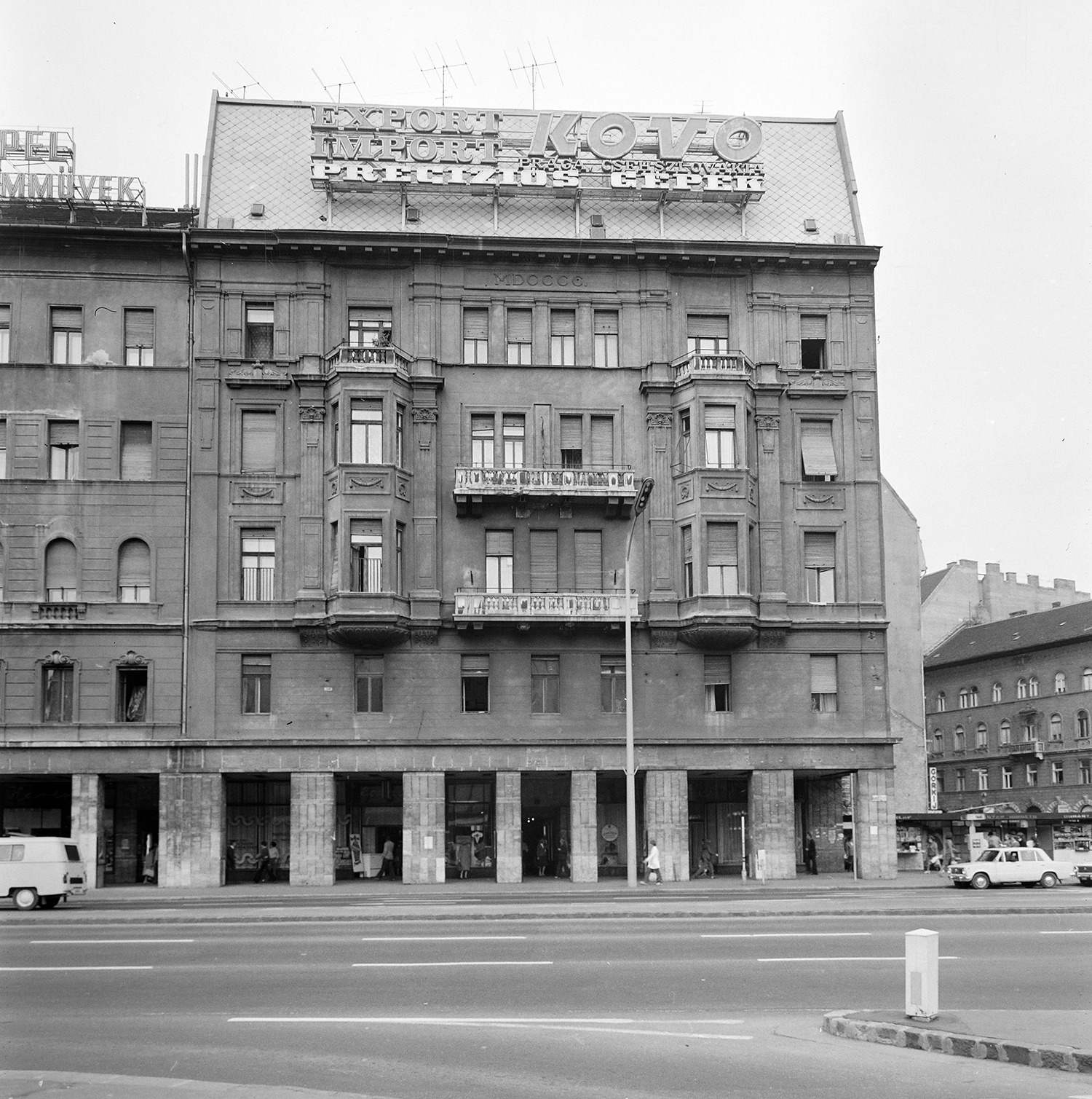 At the top of 40 Rákóczi Road in 1974, the advertisement of the Czechoslovak machine factory, Kovo was still there (Photo: Fortepan/No.: 206922)
At the top of 40 Rákóczi Road in 1974, the advertisement of the Czechoslovak machine factory, Kovo was still there (Photo: Fortepan/No.: 206922)
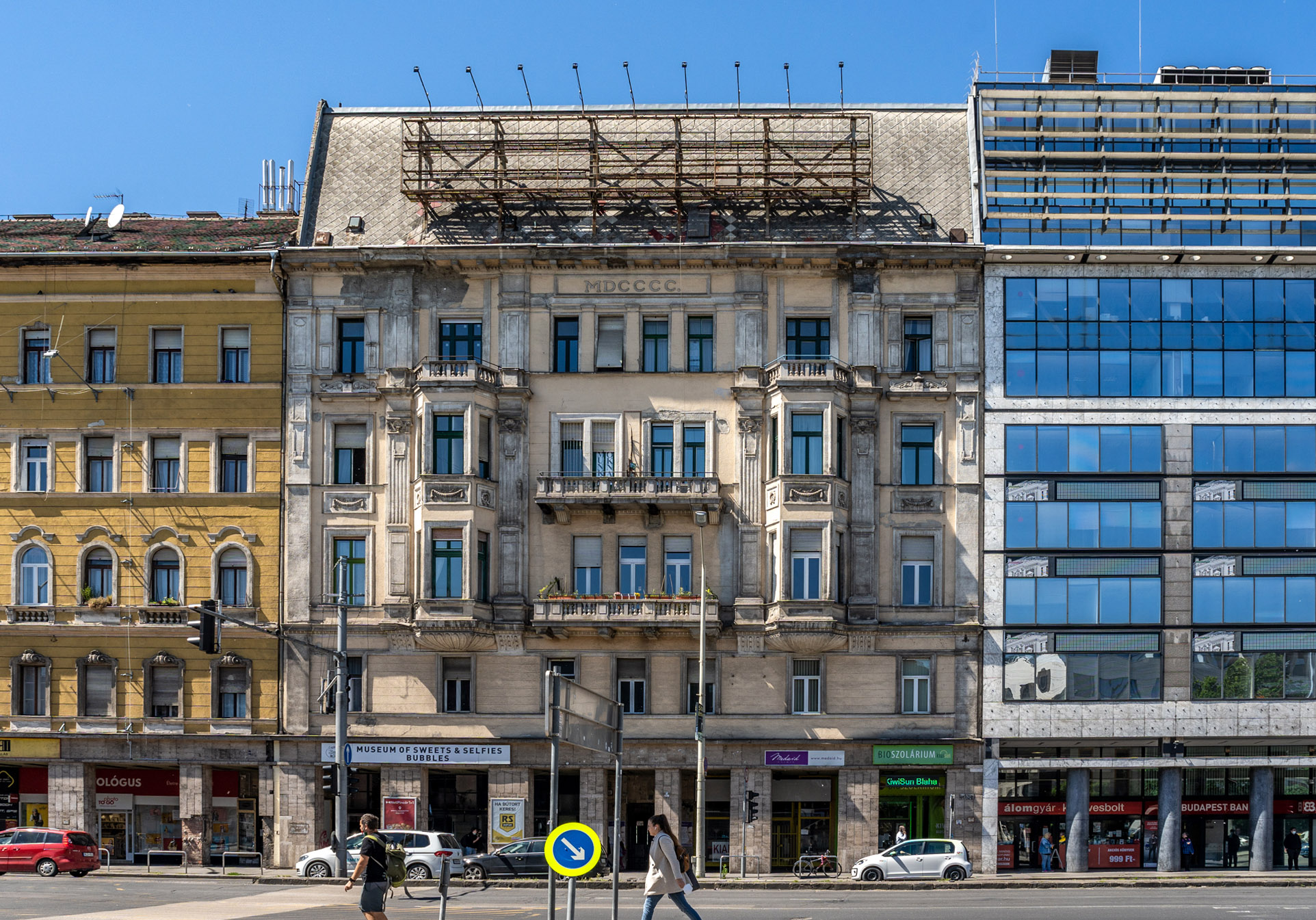
The advertisement was removed, the prop remained (Photo: Balázs Both/pestbuda.hu)
Cover photo: Neon signs still abound today on the top of 3 Baross Square (Photo: Balázs Both/pestbuda.hu)

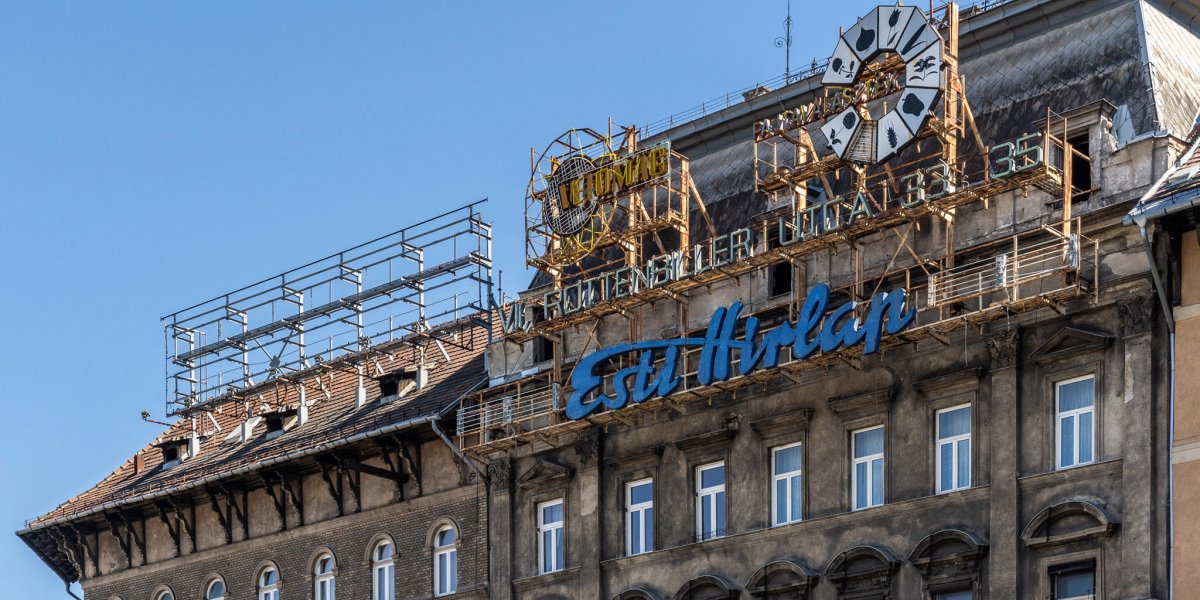



































Hozzászólások
Log in or register to comment!
Login Registration